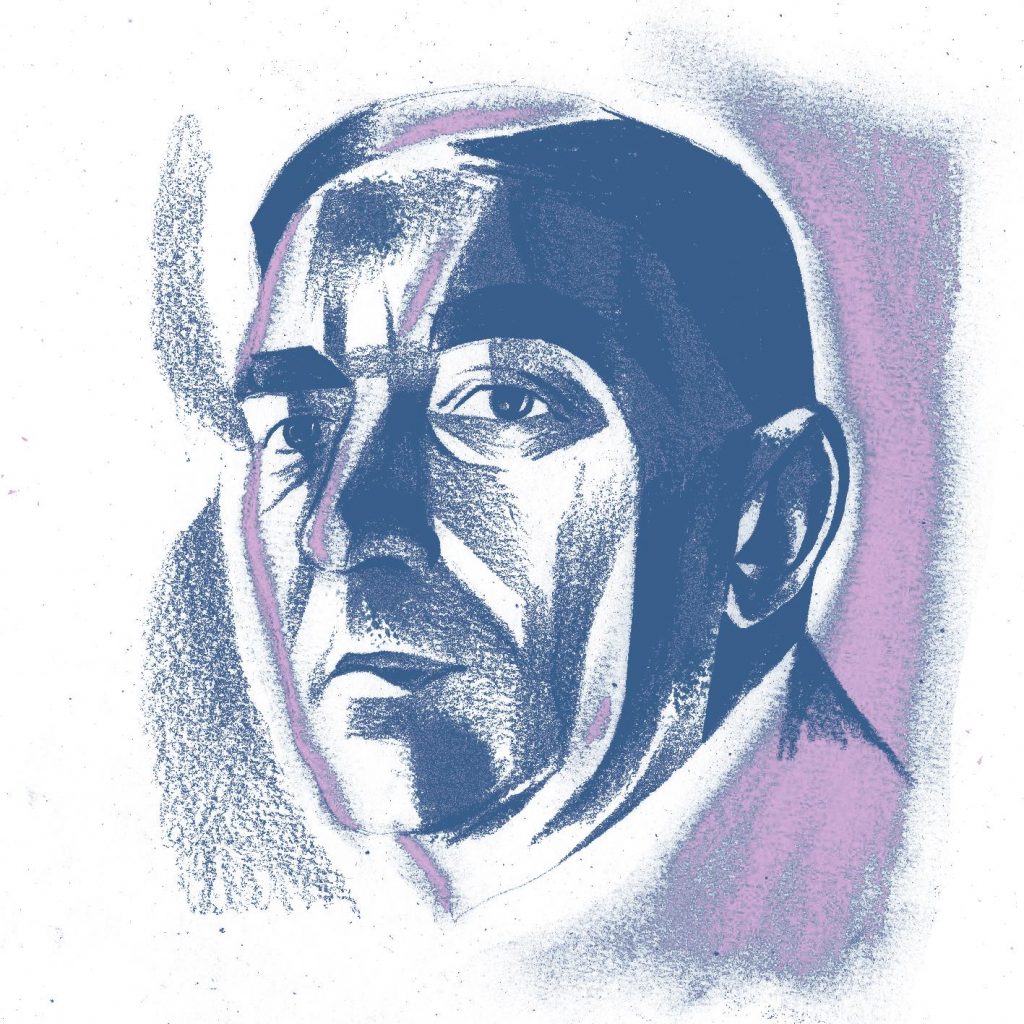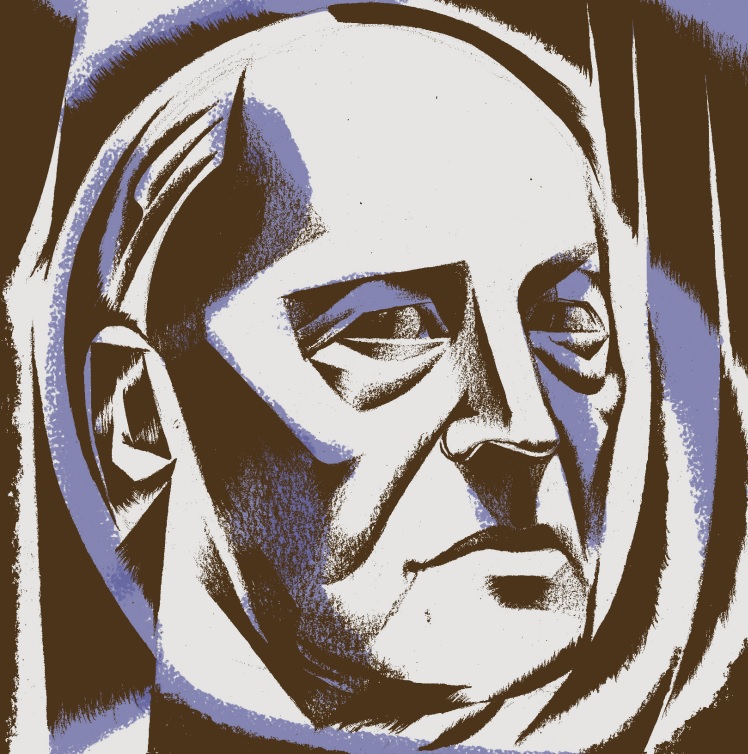
KAROL SZYMANOWSKI 1882 – 1937
KING ROGER 1926
opera in three acts, approx. 80 minutes
„I believe that any musical composition, regardless of it philosophical, emotional, and atmospheric background, is always a work of ‚pure music‘ „
The most renowned Polish opera of the twentieth century has captured the imagination of subsequent opera directors with its mystery, sensuality, and ambiguous message open to interpretation. The tale of the Sicilian king fascinated with a mysterious shepherd and heretic is based on ancient literary traditions and the cult of Dionysius. The story is filled with dramatic tensions arising between the order sanctioned by culture and religion and ecstatic desires evoked by the visit of a stranger.
Szymanowski was born into a family of the noble class in what is today’s Ukraine. The artist’s imagination must have been deeply influenced by the vastness of the landscape and cultural diversity. Fascinated with foreign lands and cultures, Szymanowski was an avid traveller. The most interesting feature of his works is the clash of various traditions: folk and christian traditions of Poland on the one hand, and western culture with its modern and liberated, also sexually, practices, on the other; a cross between the ancient Europe and the sensual Orient. Such an artistic combination resulted in internal tensions and a search for a new order for the world, in which opposites could co-exist.
Szymanowski’s artistic achievements gave a true reflection of the social, political, and artistic upheaval experienced by the composer living at the turn of the century. He was the one to make the transition from the romanticism of his beloved Chopin to modern solutions, which became a source of inspiration for Lutosławski and Górecki. During his lifetime, he gained more acclaim abroad than in his home country. Polish listeners didn’t appreciate his compositions until the post-war period. For the last several years, Szymanowski’s art has been regaining in global popularity. World-class conductors have been rediscovering his music intrigued by the ground-breaking sensuality of King Roger. Composed by the openly homosexual artist, the work has been named the first gay opera in history.
Illustrated by TOMASZ OPALIŃSKI

KRZYSZTOF PENDERECKI 1933 – 2020
THRENODY TO THE VICTIMS OF HIROSHIMA 1960
8 minutes and 40 seconds
„I was interested in the avant-garde but at the same time I remained constantly inspired by tradition (…). I wanted to demolish and then I always wanted to reconstruct.“
When the then 26-year-old Krzysztof Penderecki wrote the Threnody, he was already a sensation on the Polish music scene. The initial title Penderecki gave to his piece: 8’37’’ (the approximate duration) emphasized the composition’s abstract qualities and sound effects inspired by electronic experiments. The composition was so emotionally charged that, apparently encouraged by his friends, Penderecki changed the title into Threnody and added a dedication to the victims of the nuclear bomb. The change made it easier for the listeners to accept the shocking sound effects while the work was presented in radio stations worldwide. Initially, the Threnody sparked protests of musicians, who found it too revolutionary and claimed their instruments were put at risk. However, each performance made such a strong impression that it eventually earned Penderecki wide acclaim from the audience and musicians as well.
Born in Dębica to a family of Polish, German, and Armenian origins, Penderecki soon became one of the most important figures on the Polish music scene and its most famous ambassador abroad. He established his authority through the popularity of his early avant-garde compositions, whose ideas the composer later developed in longer forms. At that time Penderecki more and more often turned to religious themes, which found their greatest expression in the renowned St. Luke Passion (1966). Penderecki composed soundtracks to animated films and a film by Wojciech Jerzy Has, The Saragossa Manuscript (1964).
Since the disturbing atmosphere created by the Threnody and similar compositions went particularly well with horror films, Penderecki’s music has been used in many world-famous horrors, including Stanley Kubrick’s The Shining. Penderecki’s music sparked interest among artists beyond the classical music genres such as the composer and guitarist of Radiohead, Jonny Greenwood. Penderecki and Greenwood gave a few joined performances in Poland and Europe.
Illustrated by TOMASZ OPALIŃSKI

WITOLD LUTOSŁAWSKI 1913 – 1994
THE CONCERTO FOR CELLO AND ORCHESTRA 1970
approx. 26 minutes
„Life events have never provided the direct inspiration for my art. However, it has certainly been influenced by my mental state, which has been affected by my life experiences.“
When Lutosławski received a commission from the Royal Philharmonic Society in London to compose a longer piece, the composer suggested composing the first in his career concerto for an instrument and orchestra. Drawing much of his inspiration from the field of theatre, Lutosławski created a piece of an expressively dramatic structure telling a story of a conflict between a solo instrument and the orchestra. As a result of such an approach, the Concerto was often interpreted as a portrayal of the current political situation in Poland where the vulnerable individual is stifled by the all-powerful system. The composer’s explanation – that his idea was to create nothing more than a purely musical experience – proved futile.
From his early childhood, Witold Lutosławski lived through the 20th century’s worst nightmares. The outbreak of World War II brought his promising career as a composer to a halt. Drafted to the army, he was taken prisoner by the Germans but luckily managed to escape. During the war he lost his brother. The post-war reality was not favourable to the composer, whose innovative works did not reflect the aesthetics of socialist realism. Lutosławski worked for a radio station composing various jingles and musical interludes. When the political regime somewhat relaxed its repressions during the period known as “the Thaw,” avant-garde composers were allowed to create freely and communicate with the outside world.
It wasn’t long before Lutosławski’s original and sophisticated work was widely recognized and provided a gateway to his international career. The Polish composer developed his language of musical expression throughout his career, during which he employed avant-garde solutions and at the same time kept traditions alive. His aim was to “bring back the joy of composing and the joy of performing” to his contemporaries. In his music, Lutosławski was looking for order and stability as a form of escape from everyday struggles. For him, music was a completely abstract field autonomous from the outside world.
Illustrated by TOMASZ OPALIŃSKI

HENRYK MIKOŁAJ GÓRECKI 1933 – 2010
THE SYMPHONY OF SORROWFUL SONGS 1976
approx. 50 minutes
„Clearly, people have found what they were missing in my music. I have struck the right note, and instinctively sensed what they longed for.“
Three parts – three songs: two of them express the mother’s sorrow for her lost child while the third one is a child’s farewell to their mother.
When Henryk Mikołaj Górecki was writing the Symphony as commissioned by the German radio station, little did he realize the stir his music would cause and the impact it would have on his career. This time the artist, who had so far been acclaimed for his sophisticated experimental compositions, avoided any radical tones, drew from folk traditions, and drastically simplified the music, which magnified the work’s emotional and mourning effects. The compulsive repetition of musical themes, which some took for oversimplification, led to misunderstandings. Górecki composed a work unlike any other: too modern and too traditional at the same time.
Austerity, short-temper, and deep religiousness lay in the very nature of both his private and professional life. Although strongly attached to his native region of Silesia, Górecki was particularly fond of the mountainous region of Podhale. The composer’s appreciation for the work of Karol Szymanowski along with a thorough analysis of folk music contributed to the development of his unique style based on compulsive repetitions and solemnly mystical atmosphere, all of which found their greatest expression in Symphony no 3.
In 1992 the prestigious Nonesuch publisher released the composition, which broke all-time records. The CD album sold over one million copies, and topped the music charts overtaking such artists as Madonna or Michael Jackson. The Symphony received critical acclaim for its innovation in bringing together tradition and modernity. Critics traced the work’s similarities to the American minimal music traditions and electronic ambient. The work has been used in more than two hundred film productions. In 2014 an exceptional performance of the symphony took place with Beth Gibbons, the lead singer of Portishead, as the soprano and Krzysztof Penderecki as the conductor.
Illustrated by TOMASZ OPALIŃSKI
